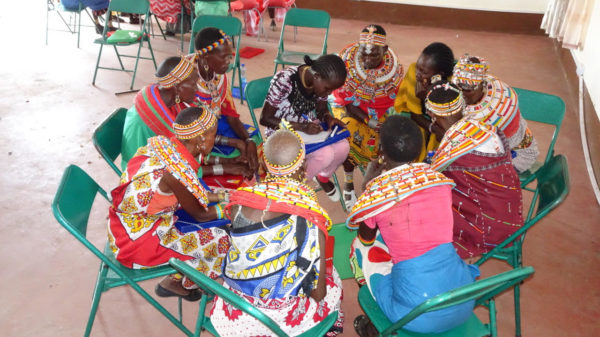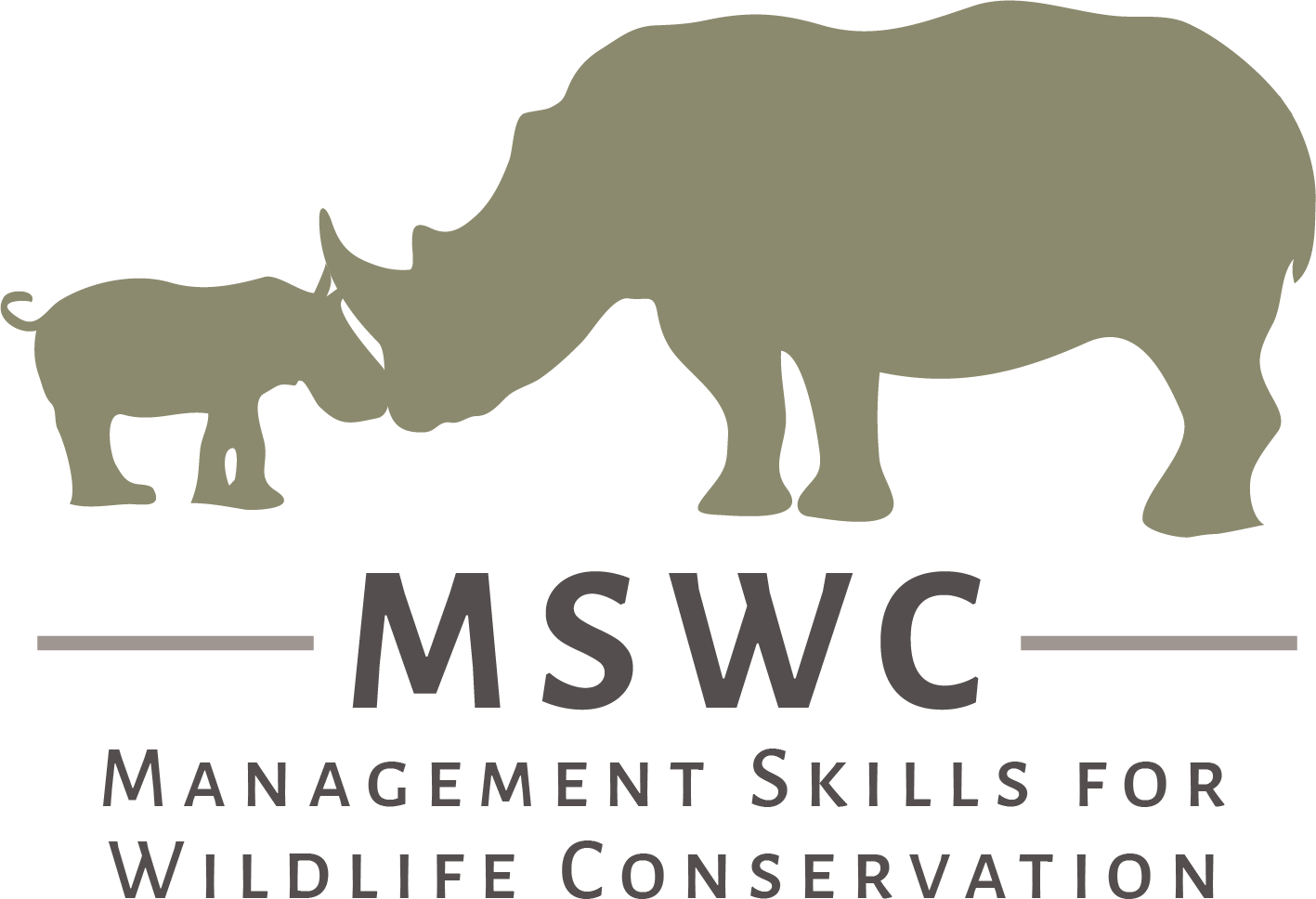
This is a growing repository of documents and links selected from various sources such as academic institutions and wildlife organizations, which may be of interest to the management education and the conservation communities.
Communities are central to conservation
Data Shows Elephants’ Habitats are Expanding. Building on the success of Koya, a female elephant fitted with a GPS monitoring collar and her family’s journey, which earlier demonstrated a great connectivity between Samburu and Marsabit in Northern Kenya, recent data shows that efforts by indigenous communities to safeguard elephant ranges and eliminate threats such as ivory poaching are paying off. January 20, 2022
Maliasili exists to help talented local conservation organizations overcome their challenges and constraints, so that they can become more effective agents of change in their landscapes, communities, and nations. Their new 2025 Strategy describes how they plan to grow impact at this critical time. See how they accelerate impact for people and nature.
UNBREAKABLE: FEMALES FIGHTING POACHING | A Study on Gender Impact in Decreasing Corruption within Anti-Poaching Units in Africa. Jessica Graham, 2021. JG Global Advisory.
Consider divergent regional perspectives to enhance wildlife conservation across Africa. Hans Bauer et al., 2021. Nature Ecology & Evolution. In African wildlife conservation literature, southern and southeastern African voices dominate, giving a false impression of pan-Africanism. We present divergent perspectives from West, Central and the Horn of Africa and argue that empathy towards multiple perspectives offers increased resilience to COVID-19 and other crises.
Toward A Theory Of Community-Based Enterprise. Ana Maria Peredo and James J. Chrisman, 2006. This article develops the concept of community-based enterprise (CBE) and argue that it provides a potential strategy for sustainable local development in poor populations.
The many ways in which a great Kenyan conservancy tackles the need for economic sustainability. Ol Pejeta Conservancy, 2019 Annual Report.
Northern Rangelands Trust: Half Year Report 2020, Strengthening Conservancy Governance – NRT’s bespoke Leadership and Management Programme (LAMP) training – offered to all conservancy boards and committees – continues to prove a critical part of member conservancies’ journey to self-reliance. Leadership in five conservancies completed their third LAMP module during the reporting period.
From crisis to solutions for communities and African conservation, Dickson Kaelo, Daniel Sopia, Damian Bell, Richard Diggle, and Fred Nelson, 2020. The way that conservationists respond to both the near-term crisis and the longer term implications of the unfolding pandemic will be pivotal for the future of Africa’s wildlife. The stakes are high not only in conservation terms, but for billions of dollars of economic investment and future opportunities related to tourism and other nature-based enterprises.
4 th. annual Conservancy Leaders Report, KWCA, 2019.
Every year the leaders of Kenya’s some 200 community conservancies come together under the aegis of the Kenya Wildlife Conservancies Association, and voice their aspirations and concerns. Improving financial viability is a core concern.
African Conservancies: Towards Best Practices (African Wildlife Foundation, 2016).
An overview of conservation practices with an emphasis on community engagement
Community-based wildlife management failing to link conservation and financial viability, M.N. Humavindu & J. Stage, Lulea University of Technology, 2014.
The article stresses the daunting challenge for community conservancies to attain financial sustainability
African community-based conservation: a systematic review of social and ecological outcomes, Kathleen A. Galvin, Tyle A. Beeton and Matthew W. Luizza, Ecology and Society 23(3):39, 2018.
A thorough meta-study of the outcomes of community-based conservancies in several African countries. Ecological outcomes are found to be more positive than social.
Kenya wildlife: facts and figures
Kenya Wildlife Conservancies Association’s (KWCA) annual report gives a snapshot of some of its pivotal achievements in 2023, each reinforcing their journey towards mainstreaming community-led conservation in Kenya and accelerating the growth of effective conservancies to impact local communities and wildlife positively.
Storing Carbon in Kenya’s Soil Could Help Herders and Save the Planet, “If the technique lives up to its promise, it could potentially open a new front in the war on climate change that not only reduces atmospheric carbon but also benefits some of the very people who are most vulnerable to its effects. Across much of Africa, changing climate has contributed to widespread degradation of grazing lands, impacting the livelihoods of pastoralists—historically nomadic people who typically graze cattle, sheep and goats—and the well-being of their communities.” – Rachel Nuwer, Newsweek.
Elephant conservation in East Africa: Has Tanzania got a handle on elephant poaching? Conservationists in Kenya have often found reason to bemoan the country’s shared border with Tanzania. In the past, the fact that great energies and funding was put to the protection of animals in Kenya was undermined by a less than equal response to the same issue south of the border. When the international trade in ivory was banned in 1989, Kenya, was at the forefront of the movement that brought this ban about.
Kenya National Wildlife Census 2021 Report (Abridged version) – This report gives an overview of the national wildlife census results. Results from this national census has provided important baseline data to inform policy to sustainably conserve and manage Kenya’s wildlife resources for current generations and for posterity.
When good Conservation becomes good Economics – Kenya’s Vanishing Herds, World Bank, 2019.
The study focuses on the impact of physical infrastructure, notably road construction, on wildlife.
State of Wildlife Conservancies in Kenya Report, KWCA, 2016.
Key facts and figures.
Global
Animating the Carbon Cycle: Earth’s animals vital allies in CO2 storage. “The idea of animating the carbon cycle (ACC) is relatively new. The concept champions the role that healthy populations of wild animals, both terrestrial and marine, can play in boosting the ability of ecosystems to store carbon, helping the planet stay within 1.5°C (2.7°F) of temperature rise over pre-industrial levels.” – Mark Hillsdon, 8 December 2022.
The WellBeing International Studies Repository (WBISR) is an open access collection of academic, archival, and assorted other materials related to various disciplines within the fields of human well-being, animal well-being and environmental sustainability (People, Animals and Environment – the PAE triad).
The developed world is outsourcing its biodiversity crisis to Africa – Simon Allison writes in The Continent, “…Africa already does a much better job of protecting nature than most of the rest of the inhabited world. There are 7,800 terrestrial protected areas on the continent that cover 5.3-million square kilometres, which works out to about 17% of its land mass – above the global average. Proportionally, African governments already spend more of their budgets on conservation than wealthier countries. But this apparent commitment to conservation has a controversial past – which might help to explain why its future is contested too.”
Law and Wildlife builds on experience in using law for prevention, deterrence, restoration, and compensation of wildlife loss, bringing these facets of law to a wider, more frequent use in the conservation community. We firmly believe that understanding and using law is a necessary way of addressing conservation issues. However, to identify legal gaps and alternative legal pathways it is imperative to understand what conservation challenges exist. To use law effectively for conservation, our work aims at closing the gap between legal and conservation disciplines. We aim to provide a common language for lawyers and conservation specialists.
Conservation Litigation are group of conservationists, lawyers, economists and artists interested in how existing liability laws can be better used to serve conservation. Building on the WILDS Project funded by the UK Government through the Illegal Wildlife Trade Challenge Fund, coordinated at the Lancaster Environment Centre, they ask, “How can we sue for biodiversity?”
What COVID-19 travel bans have done to conservation tourism in Africa – The Conversation, October 19, 2021.
The Economic Rationale to Invest in Nature – The World Bank Group is supporting the development of a new Global Biodiversity Framework through a series of research papers. These papers include an approach paper, Unlocking Nature-Smart Development; The Economic Case for Nature, which uses a unique modelling technique to estimate the cost of inaction and policies that could help reverse ecosystem services loss; a second paper called Mobilizing Private Finance for Nature and a third that examines the value of protected areas in promoting sustainable tourism.
Conservation Tech Directory – A list of organizations, communities, companies, open-source projects, and other resources within the conservation technology space.
E-learning methodologies: A guide for designing and developing e-learning courses, Food and Agriculture Organization of the United Nations, 2011. The purpose of this guide is to provide detailed guidance on designing and developing an e-learning course for trainers and instructional designers who are new to e-learning design. It also provides basic concepts and information on the processes and resources involved in e-learning development, which might be of interest to capacity-development managers.
Wellbeing International: Letter from the President, Andrew Rowan (August 2020)
The UN World Tourism Agency published a report in 2015 on the importance of wildlife tourism to national economies in Africa. About half of global wildlife tourism involves a visit to an African country, resulting in 6 million tourists a year visiting Sub-Saharan Africa (about 10% of total tourist visits to Africa). In addition, the wildlife tourism market was reported to be growing at a very healthy 10% per annum. But the 2020 pandemic has resulted in the collapse of wildlife tourism (close to zero visits to Africa after the beginning of May, 2020) and a major (but hopefully temporary) crisis for wildlife conservation (and for the people dependent on such tourism).
Conserving Africa’s wildlife and wildlands through the COVID-19 crisis and beyond, Nature Ecology & Evolution (2020)
The SARS-CoV-2 virus and COVID-19 illness are driving a global crisis. Governments have responded by restricting human movement, which has reduced economic activity. These changes may benefit biodiversity conservation in some ways, but in Africa, we contend that the net conservation impacts of COVID-19 will be strongly negative.
UN World Tourism Organization: Towards Measuring the Economic Value of Wildlife Watching Tourism in Africa – Briefing Paper (2015)
World Management Survey
The Survey measures the quality of management practices in establishments and helps in understanding drivers of organizational practices across countries and industries.
Nicholas Bloom, Stanford University
A rich repository of research papers showing why the quality of management matters to prosperity.
Cutting the Path to Prosperity – how education pioneers are building better business schools for the developing world, GBSN, 2013
Why management education matters to development.
